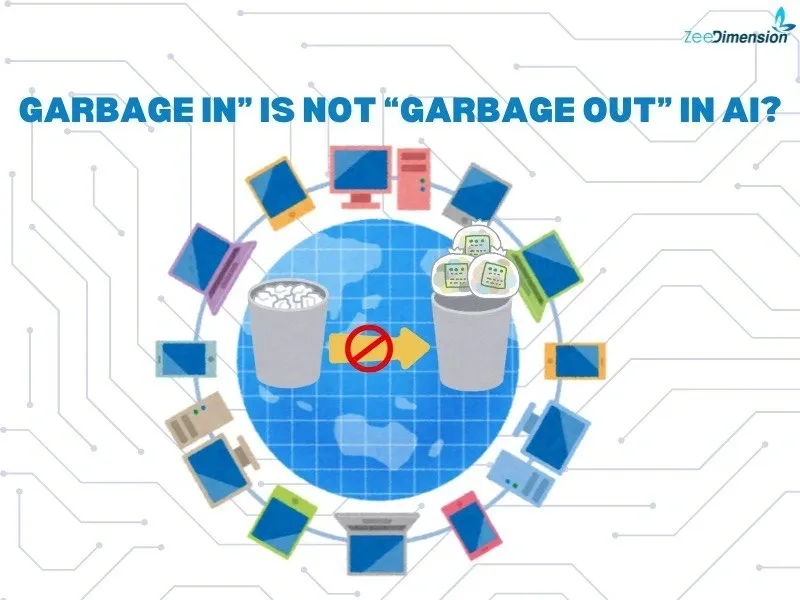
AI: Breaking the “Garbage In, Garbage Out” Myth
The maxim “Garbage In, Garbage Out” has long been a cornerstone of data processing and computers, highlighting the idea that subpar input results in subpar output. To put it another way, if you input data into a system that is inaccurate, deficient, or unnecessary, the outcomes will also be flawed.
However, this principle is changing as advanced artificial intelligence (AI) technology advances. Today’s increasingly sophisticated AI systems are capable of handling incorrect data in previously unimaginable ways, even reducing its impact.
Advanced-Data Cleaning and Preprocessing
Advanced preprocessing and data cleansing are now essential parts of modern AI systems. These days, these systems come with advanced tools that automatically clean and standardize data, ensuring that even incorrect input can be turned into insightful information. They can deal with missing values, find and fix outliers, and fix mistakes. In addition to improving the data’s quality, this automated preprocessing greatly raises the accuracy and dependability of the AI’s outputs. These cutting-edge technologies allow AI systems to produce significant and useful insights, even from initially unsatisfactory datasets, by correcting data flaws.
Self-Learning and Adaptation
Self-learning and adaptive features are built into modern AI models, enabling them to develop and get better over time. These models get better at removing noise and unimportant information as they handle larger volumes of data. Even with imperfect input data, this ongoing learning process improves their accuracy and decision-making skills. AI systems may sustain high performance and provide trustworthy insights by adjusting to new data and improving their algorithms, exhibiting exceptional resilience in the face of poor data.
Error Detection and Correction
Advanced mistake detection algorithms are now incorporated into AI systems to find and fix incorrect data before it has an impact on the output. Even when the input data is not perfect, these algorithms guarantee that the output quality stays high by identifying irregularities and fixing mistakes early on. AI can produce accurate and dependable findings thanks to this proactive approach to data management, which preserves the integrity of its outputs even when there is faulty or poor data present.
Synthetic Data Generation
AI can provide synthetic data that preserves the statistical characteristics of real-world data in situations when clean data is hard to come by. Even in cases when the original dataset has flaws, this method enables the training of AI models utilizing representative, high-quality data. AI can guarantee that models are trained efficiently, preserving their correctness and dependability, by producing synthetic data that closely resembles real data. This method allows AI to function reliably even in the face of constraints in the original data, which is especially useful in situations where it is difficult to gather large, clean datasets.
Data Quality Still Matters
While AI is better equipped to handle poor-quality data, data quality still matters. Clean, well-structured data will always lead to the most reliable results, and AI works best when built on a strong data foundation.
AI Isn’t Defeated by “Garbage” Anymore
Thanks to advancements in AI, the idea that “garbage in” always leads to “garbage out” is no longer set in stone. Today’s AI systems can clean, correct, and improve flawed data, unlocking valuable insights from datasets that were once unusable.
Conclusion: AI Unlocks the Value in Imperfect Data
The future of AI means that businesses can derive value from their data—even if it’s not perfect. With advanced data processing, error correction, and learning capabilities, AI is making “Garbage In, Garbage Out” a thing of the past.







